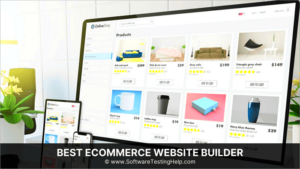Welcome to the exciting world of ecommerce website optimization! If you’re running an online store, you know how crucial it is to make your website user-friendly and efficient. Factors like page loading speed, mobile responsiveness, and streamlined navigation can greatly influence your sales and customer satisfaction. In this post, we’ll delve into some essential tips for cleaning and optimizing your ecommerce site to ensure that it not only attracts visitors but also converts them into loyal customers. Let’s dive right in!
Understanding the Importance of Website Cleanliness

Your website is often the first point of contact between you and your potential customers. It’s like the storefront of a physical retail space! Keeping it clean and organized offers numerous advantages. Here’s why website cleanliness matters:
- User Experience (UX): A clean website enhances user experience. Visitors can easily navigate your site, locate products, and make purchases without frustration.
- First Impressions: Your website often serves as the first impression of your brand. A cluttered or disorganized site can turn potential buyers away.
- SEO Benefits: A tidy website with well-structured content and clean code can significantly improve your search engine rankings.
- Faster Load Times: Keeping your site clean by removing unnecessary elements can improve loading speeds, which is crucial in retaining visitors.
Moreover, let’s consider some key elements of a clean ecommerce website:
| Element | Description |
|---|---|
| Minimal Design | Utilize a simple and intuitive layout that doesn’t overwhelm users. |
| High-Quality Images | Use clear and appealing visuals to represent your products effectively. |
| Clear Navigation | Organize your menu and categories logically to aid users in finding what they need. |
| Updated Content | Regularly update product listings, blog posts, and other content to keep it relevant. |
By focusing on these cleanliness principles, you’re not just inviting customers; you’re encouraging them to stay, explore, and make purchases. A clean ecommerce site is your best ally in driving sales and building customer loyalty!
Preparing for Cleaning: Tools and Audits

Before diving headfirst into cleaning your eCommerce website, it’s essential to have a solid plan in place. Think of it like spring cleaning for your digital storefront. You can’t just start moving things around willy-nilly; you need the right tools and a thorough audit to guide your efforts.
First off, let’s talk about the tools you’ll need. Here’s a handy list:
- Google Analytics: This tool is invaluable for tracking user behavior and understanding traffic patterns. It helps you identify which pages perform well and which could use a makeover.
- SEO Audit Tools: Tools like SEMrush, Ahrefs, or Moz can provide insights into your site’s search engine optimization. They’ll highlight any issues that could be affecting your visibility in search results.
- Page Speed Testing Tools: Websites like GTmetrix or Google PageSpeed Insights can help assess your site’s loading speed. Fast-loading pages are crucial for a smooth user experience.
- Heatmaps and Session Recordings: Tools like Hotjar or Crazy Egg show you how users interact with your site. This data can pinpoint problem areas and inform your design decisions.
Now that you have your tools lined up, it’s time to conduct an audit. Here’s a simple checklist to follow:
- Review your website’s analytics to identify poorly performing pages.
- Check for broken links that can frustrate users and harm your SEO.
- Evaluate your product categories for organization and accessibility.
- Analyze your website’s speed in different conditions, like mobile vs. desktop.
With this preparation, you’ll be well-equipped to tackle any issues and enhance your eCommerce website‘s performance.
Cleaning Up Your Website’s Design and Layout
Once you’ve done your homework and gathered essential data, it’s time to roll up your sleeves and get to the fun part: cleaning up your website’s design and layout! This step is all about creating a seamless and inviting experience for your visitors. Let’s delve into some effective strategies.
Start by simplifying your layout. A cluttered website can overwhelm visitors, leading to high bounce rates. Here are a few tips:
- Utilize Whitespace: Don’t be afraid of empty space. Whitespace can enhance readability and make your content more digestible.
- Limit Color Palette: Stick to a cohesive color scheme. Too many colors can distract users, so choose a few that represent your brand effectively.
- Organize Navigation: Ensure your menus are intuitive. Categories should be easy to find and logically structured.
Next, think about your images and graphics. High-quality visuals can make a huge difference in user satisfaction:
- Replace Low-Res Images: Always use high-resolution images that reflect your products accurately.
- Optimize Images: Compress images to improve loading times without sacrificing quality.
- Use Consistent Branding: Ensure that all visual elements align with your brand’s identity.
Lastly, ensure your website is mobile-friendly. With more consumers shopping on mobile devices than ever, having a responsive design is crucial:
- Test your website on various screen sizes to ensure everything displays properly.
- Optimize touchpoints for easy navigation on smaller screens, like buttons and links.
Cleaning and optimizing your website’s design isn’t just about aesthetics; it’s also about functionality and user experience. Keep your audience in mind, and you’ll create a welcoming online store that encourages conversions!
5. Optimizing Product Pages for Better Performance
When it comes to eCommerce, your product pages are the heart of your online store. If they aren’t optimized properly, you risk losing potential sales and frustrating your customers. Here are some effective tips to enhance the performance of your product pages:
- High-Quality Images: Use crisp, high-resolution images to showcase your products. Customers want to see what they’re buying, and great visuals can build trust.
- Compelling Descriptions: Write engaging and informative product descriptions. Highlight key features, benefits, and use clear, persuasive language.
- SEO Optimization: Incorporate relevant keywords into your product titles and descriptions. This helps search engines rank your pages and makes them easier for customers to find.
- Clear Call to Action: Use clear and compelling CTAs like “Add to Cart” or “Buy Now.” This encourages users to take action without hesitation.
- Responsive Design: Ensure that product pages look great on both desktop and mobile devices. A mobile-friendly design is crucial for reaching a wider audience.
- User Reviews: Integration of customer reviews can significantly boost credibility. Potential buyers will appreciate seeing feedback from others.
By implementing these strategies, you’ll create product pages that are not only visually appealing but also drive higher conversion rates!
6. Improving Page Load Speed
Page load speed is a crucial component of a successful eCommerce website. If your pages take too long to load, you risk losing visitors and sales. Here are some actionable tips to boost your site’s speed:
- Image Optimization: Compress and resize images without sacrificing quality. Tools like TinyPNG or ImageOptim can help reduce load times.
- Minimize CSS and JavaScript: Remove any unnecessary code and use minification techniques to streamline your stylesheets and scripts.
- Leverage Browser Caching: Use caching to store frequently accessed resources so that returning visitors can load your site faster.
- Content Delivery Network (CDN): Implement a CDN to distribute your content across various server locations, reducing latency and improving loading times globally.
- Reduce Redirects: Each redirect creates additional HTTP requests. Keep these to a minimum to enhance load speed.
- Optimize Server Response Time: Work with a reliable hosting provider to ensure that your server is responsive and meets the demands of your traffic.
Remember, a faster website not only enhances user experience but also positively impacts your SEO ranking. So, invest the time to ensure your eCommerce site speeds are top-notch!
7. Enhancing SEO for Ecommerce Websites
Search Engine Optimization (SEO) is a cornerstone of any successful ecommerce venture. By enhancing your website’s SEO, you enable more potential customers to discover your products. It’s not just about optimizing for search engines, though—it’s about providing valuable information and a great user experience. Here are some strategies to enhance your ecommerce site’s SEO:
- Keyword Research: Start by identifying relevant keywords that your target audience is searching for. Use tools like Google Keyword Planner or SEMrush to find high-traffic, low-competition keywords that relate to your products.
- Product Descriptions: Write unique, compelling product descriptions that incorporate your target keywords naturally. Avoid duplicating manufacturer descriptions, as unique content will help you rank better.
- Image Optimization: Make sure to optimize your images by using descriptive file names and alt text. This not only helps with SEO but also improves accessibility.
- Site Speed: A fast-loading website is crucial for both SEO and user experience. Optimize images and utilize caching to improve loading times.
- Mobile Responsiveness: With the growing trend of mobile shopping, ensuring your site is mobile-friendly is essential. A responsive design will improve both SEO ranking and user engagement.
- Quality Backlinks: Build backlinks from reputable sites related to your niche. Quality backlinks can significantly boost your SEO ranking.
- Regular Content Updates: Consider maintaining a blog or a resource page where you regularly post content relevant to your products. This not only helps with SEO but also establishes you as an authority in your field.
In summary, enhancing SEO for your ecommerce website is all about understanding your customers and improving both the information you provide and the experience they receive.
8. Streamlining Navigation for a Better User Experience
Effective navigation is essential for any ecommerce website. When visitors find it easy to navigate your site, they’re more likely to convert into paying customers. Here are some tips for streamlining navigation:
- Clear Menu Structure: Organize your menu in a logical hierarchy. Categories and subcategories should be distinct, helping users find what they’re looking for quickly.
- Search Bar Accessibility: Ensure your search functionality is prominently displayed, enabling users to quickly search for specific products or keywords.
- Breadcrumbs: Implement breadcrumb navigation, allowing users to see their location within your site and easily return to previous pages.
- Limit Choices: While it’s tempting to showcase all your products at once, too many options can overwhelm visitors. Instead, limit choices within each category and provide filtering options to narrow down results.
- Responsive Design: Make sure your navigation is user-friendly across all devices, especially smartphones. A good mobile navigation experience can significantly enhance user retention.
- Visual Cues: Use icons and visual cues to guide users. For example, a shopping cart icon clearly indicates where users can view their selected items.
Ultimately, streamlined navigation enhances the user experience, allowing your customers to effortlessly explore your products. By implementing these strategies, you’re more likely to increase both conversion rates and customer satisfaction!
Regular Maintenance: Best Practices
Keeping your eCommerce website clean and optimized is not a one-time task; it’s a continuous process that ensures optimal performance and user satisfaction. Think of regular maintenance as giving your website a little TLC (tender loving care). Here are some best practices to help you maintain your site effectively:
- Schedule Regular Backups: Create a backup schedule that fits your needs, whether it’s daily, weekly, or monthly. Backing up your site protects your data against loss due to unforeseen events.
- Update Software and Plugins: Regularly update your content management system (CMS), themes, and plugins. Keeping these updated helps prevent security vulnerabilities and ensures compatibility with new features.
- Monitor Site Performance: Use tools like Google PageSpeed Insights or GTmetrix to regularly check your website’s performance. These tools provide insights on loading times and offer suggestions for improvement.
- Audit Your Content: Periodically review your product descriptions, images, and blog posts. Ensure they are still relevant and provide accurate information. You can even repurpose old content to keep things fresh!
- Check for Broken Links: Broken links can frustrate users and hurt your SEO. Use tools like Screaming Frog or Ahrefs to identify and fix any dead links on your website.
- Keep an Eye on Analytics: Regularly check your website analytics to understand user behavior. This can help you spot trends, identify problems, and adjust your strategy accordingly.
By implementing these best practices, you can ensure your eCommerce website remains in top shape, providing a delightful shopping experience for your customers.
Conclusion: Sustaining Website Optimization Over Time
Optimizing your eCommerce website is an ongoing journey, not just a one-off task. Once you’ve implemented various optimization techniques, it’s vital to maintain that momentum. Here’s how to sustain your website optimization over time:
- Stay Informed: Keep yourself updated with the latest trends in eCommerce and website optimization. Subscribe to newsletters, attend webinars, or join community forums to learn from others.
- Continuous Testing: Regular A/B testing allows you to experiment with different layouts, content, and features to see what resonates best with your audience. It’s all about refining your website based on real data!
- Engage with Your Customers: Listen to customer feedback. Survey your visitors, ask for their thoughts on usability, and implement changes based on their experiences.
- Maintain SEO Best Practices: Keep your SEO strategy updated according to algorithm changes by search engines. Continually refine your keywords, update meta tags, and ensure your content remains relevant.
- Invest in New Technologies: As technology progresses, your website should also evolve. Consider incorporating features like AI chatbots, personalized content, and voice search to enhance user experience.
By committing to this ongoing process, you’ll not only keep your eCommerce website optimized but also foster loyal customers who enjoy seamless shopping experiences. Remember, every tweak and improvement contributes to your long-term success!



